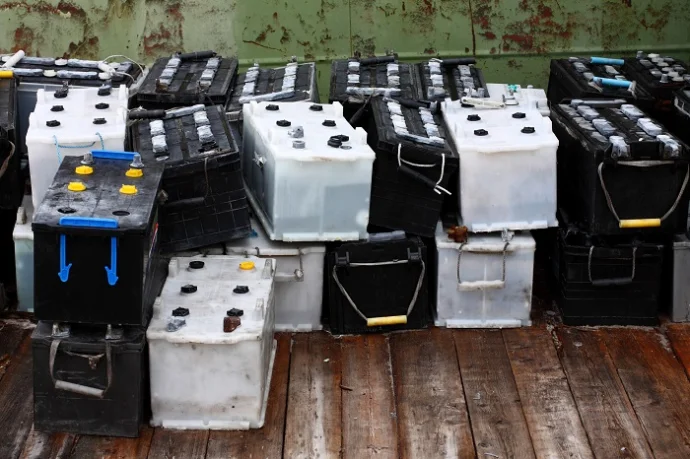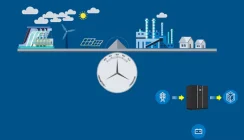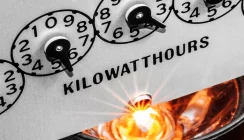Calculating The Cost of Replacing a UPS Battery Set
Uninterruptible power supplies have several consumable parts of which the battery set is the costliest requiring replacement at least once or twice during its working life. What costs should you take into consideration when deciding whether to replace your UPS batteries or upgrade to a new UPS system?
UPS Systems with Lead Acid Batteries
Most UPS systems are installed with valve regulated lead acid (VRLA) batteries or battery sets. This is the most commonly used battery due to its cost and performance in a standby power application. The battery is generally only used occasionally to provide power to the UPS inverter and for the most part remains on charge until it is required.
Most lead acid battery manufacturers offer two design lives: a 5 year and a 10 year and though the physical battery may look the same, internally the battery may have more lead and a higher concentration of electrolyte gel.
Lead acid batteries are sensitive to temperature and work best around 20-25˚C, the temperature range of a typical server room. Within this ambient range a 5-year design life battery can be expected to last around 3-4 years and a 10-year design life set around 7-8 years.
Predictive UPS Battery Testing
A UPS system will check its battery set automatically and typically every 24 hours. This type of testing is on the complete battery set and not each individual battery. For a UPS battery alarm to occur the battery set must overall show a significant level of degradation.
Predictive testing can be achieved in two ways. The first is to install a separate battery monitoring system. For this a test/monitor is attached to each battery block in the UPS battery set, which continuously monitors the block and reports readings and changes to a centralised management system. Alarms can be raised for any battery block whose readings or performance fall outside a threshold band.
Battery monitoring systems can be expensive and more suited to larger three phase UPS installations from 500kVA upwards. For smaller installations it may be more cost effective to deploy hand-held battery testers for certified battery or UPS engineer to use during a preventative maintenance visit. Today’s hand-held devices are sophisticated and can record readings for ID numbered blocks and store the data in a dedicated Cloud-based system for reporting and year-on-year comparisons. From the data, individual battery block performance can be monitored, and failure predicted.
Battery monitoring and testing can therefore help to length the working life of a battery set by around 12 months or more. This is dependent upon the ambient environment, quality of the original battery set and the battery management capabilities of the UPS. The UPS power system should include temperature compensating charging as standard and may have other more sophisticated battery management functions including sleep mode which can turn off charging to allow the batteries to self-discharge to a set threshold before turning back on again; an energy efficiency mode than can run for up to two weeks or more.
UPS with Lithium Ion Batteries
Lithium-ion batteries offer several advantages over lead acid. They are tolerant of higher ambient temperatures (above 25˚C and higher) and are capable of a higher number and far faster charge/recharge cycles. The design life is also expected to be 10-15 years or greater.
The negative around lithium batteries comes from their high-power density and core component. Most users’ experience of lithium is within their mobile phones and tablets. A day long charge can be achieved for a mobile phone within an hour and sometimes less.
For some UPS applications a lithium ion battery may be suitable than a lead acid one. These applications tend to be where a small compact UPS is required for a higher temperature environment or where a larger UPS is required to act as an energy storage system and assist in a Demand Side Response (DSR) programme with the National Grid in order to earn revenue from locally generated (renewable) or unrequired battery power.
There are several types of lithium battery available and for use in a server room or datacentre one of the key issues for some facilities and IT managers is that lithium is flammable when exposed to air. However, this can only occur if the battery case is cracked or damaged and whilst the impact may be the same as the failure of an electrolytic capacitor, it is rare and can be contained with a fire suppression system.
More info: https://batteryuniversity.com/learn/article/types_of_lithium_ion
UPS installations with lithium-ion batteries are expected to rise over the next 2-5 years a UPS manufactures solve the complex charging and battery management arrangements required for lithium and as the manufacturing costs of the batteries fall. This means that replacement of lithium-ion UPS batteries is not likely to occur for around 10 years or more unless there are failures.
This may be advantageous in terms of recycling.
UPS Battery Recycling
As the established battery technology within the uninterruptible and many other power system markets, recycling methods and facilities for lead acid are well established. Up to 90% or more of a lead acid battery can be repurposed at specialist recycling centres including the plastic cases, lead plates and hydrochloric acid electrolytes. The level of recycling gives rise to rebate for reclaimed materials that can often be used to help off-set the cost of a replacement UPS battery set.
This is not the case for lithium batteries for which there are limited recycling facilities in the UK and Europe and yet there is a growing demand for this type of facility. Not just from UPS manufacturers but also manufacturers of energy storage systems (domestic and grid scale) as well as the manufacturers of electric vehicles. The next 5 years should see an increase in lithium battery recycling facilities but for now the costs are higher than for lead acid with little if any chance of a rebate.
Replacing UPS Batteries
When it is time to replace a UPS battery set downtime must be planned for as the uninterruptible power supply must be completed powered down. This is easiest if there is either a separate UPS maintenance bypass switch or parallel/redundant configuration.
With a UPS maintenance bypass the critical load can be transferred to a secondary supply or the mains power supply whilst the UPS battery is replaced. With a parallel/redundant UPS configuration, provided there is no shared battery, one UPS can be taken out of circuit, whilst the other(s) support the critical load.
The actual replacement method also depends upon the design of the UPS system and whether it has been designed for user-replaceable or certified engineer replacement. Batteries store electrical energy and the higher the Ampere-hour (Ah) and DC voltage of the battery string, the greater the risk if the correct procedures are not followed for accidental discharge and injury. Battery replacement should ideally be carried out by certified engineers trained in both DC and AC power systems. Replacement UPS battery options include:
- User Replaceable Batteries: typically small single-phase UPS desktop and tower systems. This tends to be the case where there are only one or two batteries and the Vdc rail and current values are small, as with an alarm panel. It is relatively easy to remove a cover panel, disconnect and remove the old battery and connect and fit the new ones. The replacement UPS batteries must have the right terminal connections; normally push-on. The replacement battery supplier may provide a return service for the old batteries and will send them to a recycling centre.
- Replacement UPS Cartridges: more sophisticated power systems may use cartridges which are designed to plug-into a UPS as trays and assemblies. When it is necessary to replace these batteries, either a completely new cartridge can be provided or individual battery replacement kits which swapping into the existing cartridge. The old cartridge or replaced batteries can then be collected from site for recycling.
- Individual Replacement Battery Blocks: here individual battery blocks are supplied. The original battery set must be isolated and dismantled and the new blocks put into place and connected. The old battery blocks can then be removed from site for recycling.
Even with user-replaceable batteries, care should be taken to ensure there are no risks presented and it is always recommended that any battery change is only carried out by suitably qualified personnel. For larger battery installations, whether the systems use battery cartridges or requires individual battery block replacement, it may be necessary to generate a site-specific risk assessment and method statement (RAMS) document and to get sign-off for the powering down of the UPS. The battery replacement work may therefore have to be scheduled for outside hours incurring extra labour charges.
Other Consumable Components: Fans and Capacitors
The two other principle consumable parts within a UPS system are its cooling fans and capacitors and these may require replacement at some point during the lifetime of the uninterruptible power supply. For most power systems replacement as part of a refurbishment plan around years 8-10 is considered prudent and for highly critical sites the replacements may be built-into the UPS maintenance schedule.
UPS Cooling Fans
The cooling fans within a UPS system are self-contained units designed for continuous running and speeds to compensate for the temperature within the UPS case or cabinet. The fans are designed to cool critical electronic circuits within the UPS system and to exhaust the heat. This will increase demands on local air conditioning and cooling. A typical 100kW UPS may generate 5kW of heat if it is operating at 95% on-line efficiency.
Cooling fan failures are measured in terms of failure per million hours (of operation) referred to as FPMH. At 25˚C this figure may be as low a 6 units FPMH, doubling to 12 at 50˚C. The failure rate is extremely low but what must be kept in mind is that these self-contained units are continuously running. They are self-contained but the grease and bearings within them can run dry and the intake of air into the units can lead to a build-up of dust on the units which forces them to work harder and into a vicious cycle during which failure is inevitable.
Most UPS systems can operate up to 40˚C and may have two more cooling fans with some level of N+X redundancy. However, a power system should not be run for long periods at the extreme of it operating range and any rise above 30˚C will halve the design life of the battery if it is a valve regulated lead acid type. Lithium ion batteries are less temperature sensitive.
Uninterruptible power supplies have built-in fan failure detection systems. These are either a simple temperature probe that alerts when the internal case or cabinet temperature rises above a threshold or individual sensors attached to the fan assembly or individual fans.
UPS Capacitors
A UPS system will have both AC and DC capacitors and they should be visually checked during a preventative maintenance visit for any signs of heat damage or corrosion to their outer cases or terminals. Capacitors are generally made from polypropylene film which is highly flammable and will form part of printed circuit boards (PCBs) as well as a main capacitor assembly.
Capacitors store electrical energy and the assembly is used as part of the power delivery circuit to the critical load. For example, the capacitors may be used to tune a transformer-based design and/or to provide capacitance during the inverter input connection switching time between rectified mains power and stored battery power.
Capacitors are designed to self-heal and fail safely with a top that splits from the main body and disconnects the circuit should there be any sign of a short-circuit or thermal runaway. Where this does not happen, the result can be a catastrophic failure.
UPS Battery Replacement Checklist
- Date of UPS installation and last battery change
- UPS spares availability and date of manufacture
- Energy efficiency and running costs comparison
- Battery type (lead acid or lithium), supplier and lead time
- UPS downtime planning requirements
- UPS isolation and bypass arrangements
- UPS performance and reliability to date
- UPS/battery engineer availability and costs
- Preventative annual battery testing
- Fixed battery monitoring system costs
- Battery transportation and recovery costs
- Recycling centre rebates
- Risk assessment and method statement
- Warranty period
Summary
With regular preventative UPS maintenance it is possible to keep a UPS running up to 10 years or more. The costs for doing so have to be compared to the benefits that can come from upgrading to a new system.
Over a ten-year period, significant advancements will be made in terms of operating efficiency, footprint and functionally, whose benefits make upgrading an easy and more cost-effective decision. A new UPS and battery system also mean a new manufacturer’s warranty period.
Most UPS system batteries are replaced within smaller systems up to 10kVA within a five-year period and when a second replacement set is required the UPS system is upgraded and the old system is decommissioned and recycled. For larger systems the timespan is typically 10 years with some sets operating to 15 years or more, but these tend to be the more industrial type systems, designed for longer working lives.


























